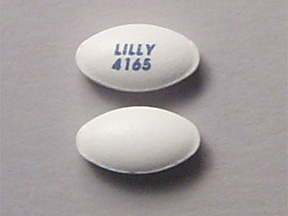Evista Disease Interactions
There are 5 disease interactions with Evista (raloxifene).
Raloxifene (applies to Evista) thromboembolism
Major Potential Hazard, High plausibility. Applicable conditions: Thrombotic/Thromboembolic Disorder, History - Thrombotic/Thromboembolic Disorder, Congestive Heart Failure, Pulmonary Embolism
The use of raloxifene is contraindicated in patients with active or past history of venous thromboembolic events, including deep vein thrombosis, pulmonary embolism, and retinal vein thrombosis. In clinical trials, women treated with raloxifene had an increased risk of venous thromboembolism. A less serious event, superficial thrombophlebitis, also has been reported more frequently with raloxifene. The greatest risk for deep vein thrombosis and pulmonary embolism occurs during the first four months of treatment. Therapy with raloxifene should be considered cautiously in women at risk for thromboembolic disease for other reasons, such as congestive heart failure, superficial thrombophlebitis, and active malignancy.
Raloxifene (applies to Evista) heart disease
Moderate Potential Hazard, Moderate plausibility. Applicable conditions: Cerebrovascular Insufficiency
In studies of postmenopausal women with documented coronary heart disease or at increased risk for coronary events, an increased risk of death due to stroke was observed after treatment with raloxifene. The risk-benefit balance should be considered in women at risk for stroke, such as prior stroke or transient ischemic attack (TIA), atrial fibrillation, hypertension, or cigarette smoking.
Raloxifene (applies to Evista) hypertriglyceridemia
Moderate Potential Hazard, Moderate plausibility. Applicable conditions: Hyperlipidemia
In studies of women with a history of marked hypertriglyceridemia (>5.6 mmol/L or >500 mg/dL) in response to treatment with oral estrogen or estrogen plus progestin may develop increased levels of triglycerides when treated with raloxifene. Women with this medical history should have serum triglycerides monitored when taking raloxifene.
Raloxifene (applies to Evista) liver disease
Moderate Potential Hazard, Moderate plausibility.
Raloxifene undergoes extensive first-pass metabolism in the liver. Following administration of a single oral dose in Child-Pugh Class A patients with cirrhosis and total serum bilirubin ranging from 0.6 to 2.0 mg/dL, plasma raloxifene concentrations were 2.5 times higher than in controls. Therapy with raloxifene should be administered cautiously in patients with hepatic insufficiency, since safety and efficacy have not been evaluated. Although raloxifene is generally well tolerated, even at dosages higher than currently recommended, patients with liver disease should be monitored for occurrence of undue adverse effects during raloxifene therapy.
Raloxifene (applies to Evista) renal impairment
Moderate Potential Hazard, Moderate plausibility. Applicable conditions: Renal Dysfunction
Raloxifene should be used with caution in patients with moderate or severe renal impairment.
Switch to professional interaction data
Evista drug interactions
There are 47 drug interactions with Evista (raloxifene).
Evista alcohol/food interactions
There is 1 alcohol/food interaction with Evista (raloxifene).
More about Evista (raloxifene)
- Evista consumer information
- Check interactions
- Compare alternatives
- Pricing & coupons
- Reviews (12)
- Drug images
- Side effects
- Dosage information
- Patient tips
- During pregnancy
- Generic availability
- Drug class: hormones/antineoplastics
- En español
Related treatment guides
Drug Interaction Classification
| Highly clinically significant. Avoid combinations; the risk of the interaction outweighs the benefit. | |
| Moderately clinically significant. Usually avoid combinations; use it only under special circumstances. | |
| Minimally clinically significant. Minimize risk; assess risk and consider an alternative drug, take steps to circumvent the interaction risk and/or institute a monitoring plan. | |
| No interaction information available. |
See also:
Further information
Always consult your healthcare provider to ensure the information displayed on this page applies to your personal circumstances.


